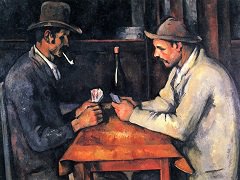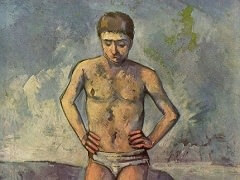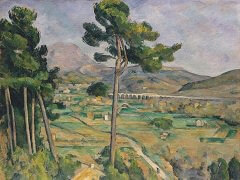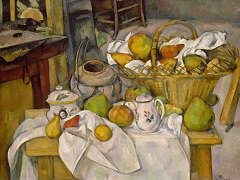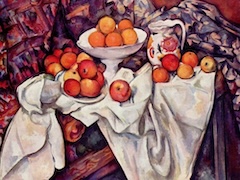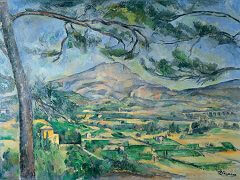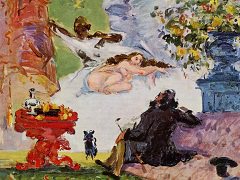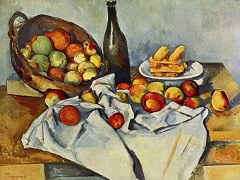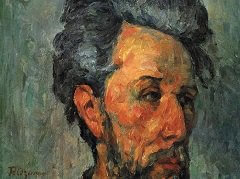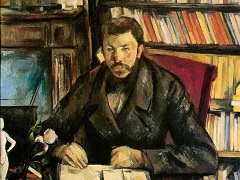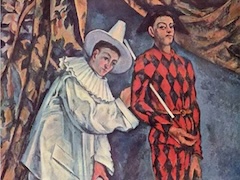Mont Sainte-Victoire, 1902-04 by Paul Cezanne
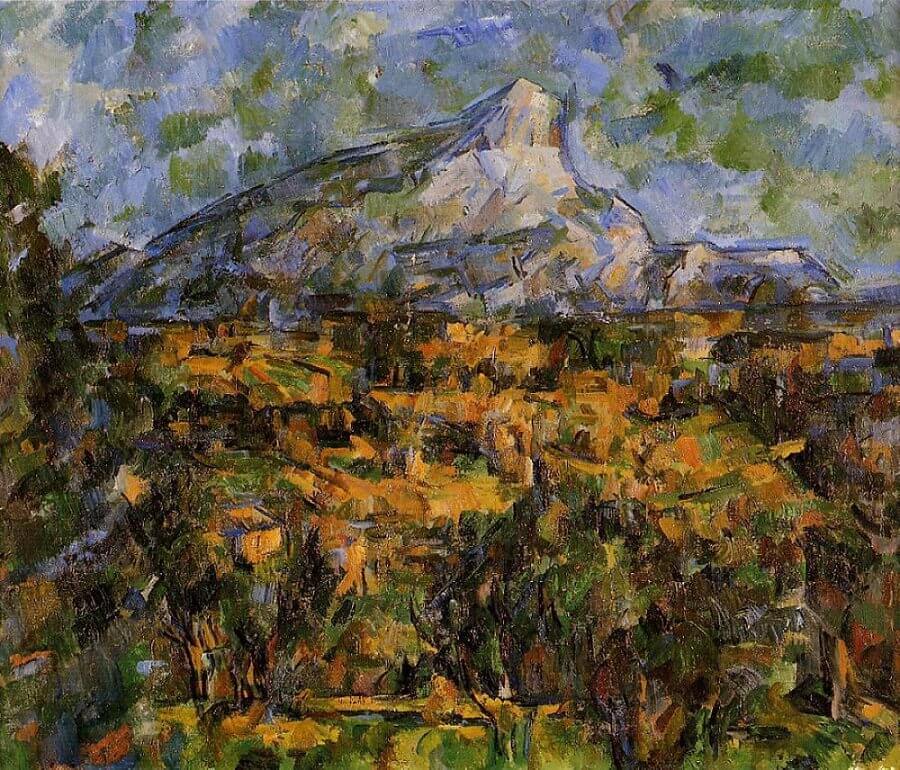
The broken vision of Cezanne is a glittering array of glimpses and hesitations and reconsiderations. The intensity of his gaze and the severity of his mind as he attempts to see and somehow grasp the essence of the mountain before him is one of the most moving and revelatory struggles in the history of art.
Toward the end of his life, Cezanne's painting becomes passionately free, to the point of ecstatic release. The intensity of feeling that marked his early romantic pictures returns in a new form. It is no longer a painting of excited mental images of human violence and desire, but a stormy rhapsody in which earth, mountain, and sky are united in a common paean, an upsurge of color, of rich tones on a vast scale. It is an irrepressible lyric of fulfillment which reminds us of Beethoven's music. The dynamism of fervid emotion possesses the entire canvas. The contrasts are not simply of the stable and the unstable, as in his other works, but of different kinds of movement and intense color.
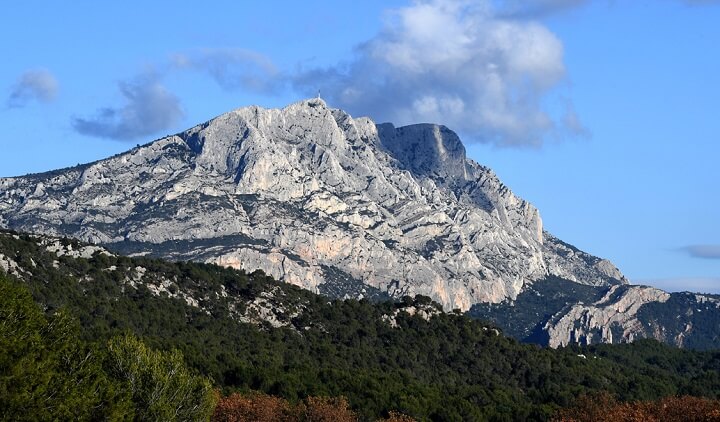
The mountain rises passionately to the sky and also glides on the earth. Its surface is like a perspective network of ascending lines, converging to the peak as a goal. The sky in turn bursts into a dance of colors, an explosion of clouds of blue and green, as deep and strong as the blues and greens of the earth - tremendous volumes of sonorous color which form a tempestuous halo of pure tones around the glorious mountain and give the latter a more living, dramatic quality. The earth approaches chaos, yet is formed of clear vertical and horizontal strokes in sharp contrast to the diagonal strokes of the mountain and the many curving strokes of the sky. These reappear in the lower foreground in blues and purples and violets, a reversed echo of the distant mountain.
Under all this turbulence of brushwork and color lies the grand horizontal expanse of the earth.



